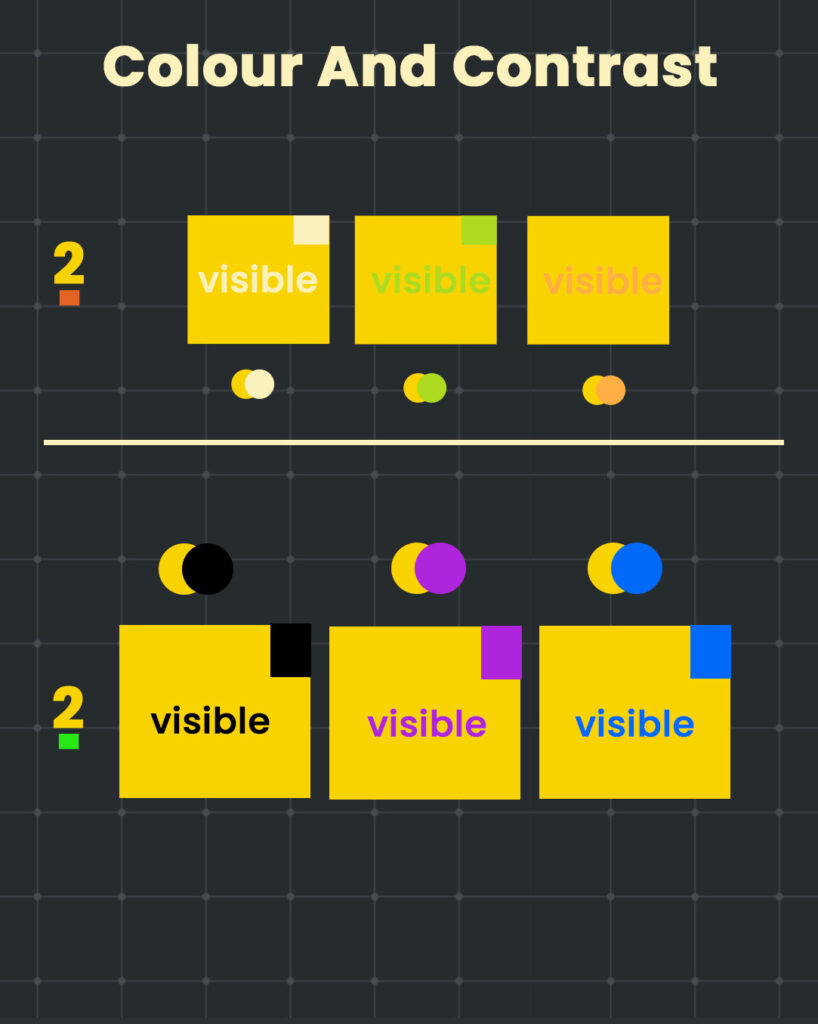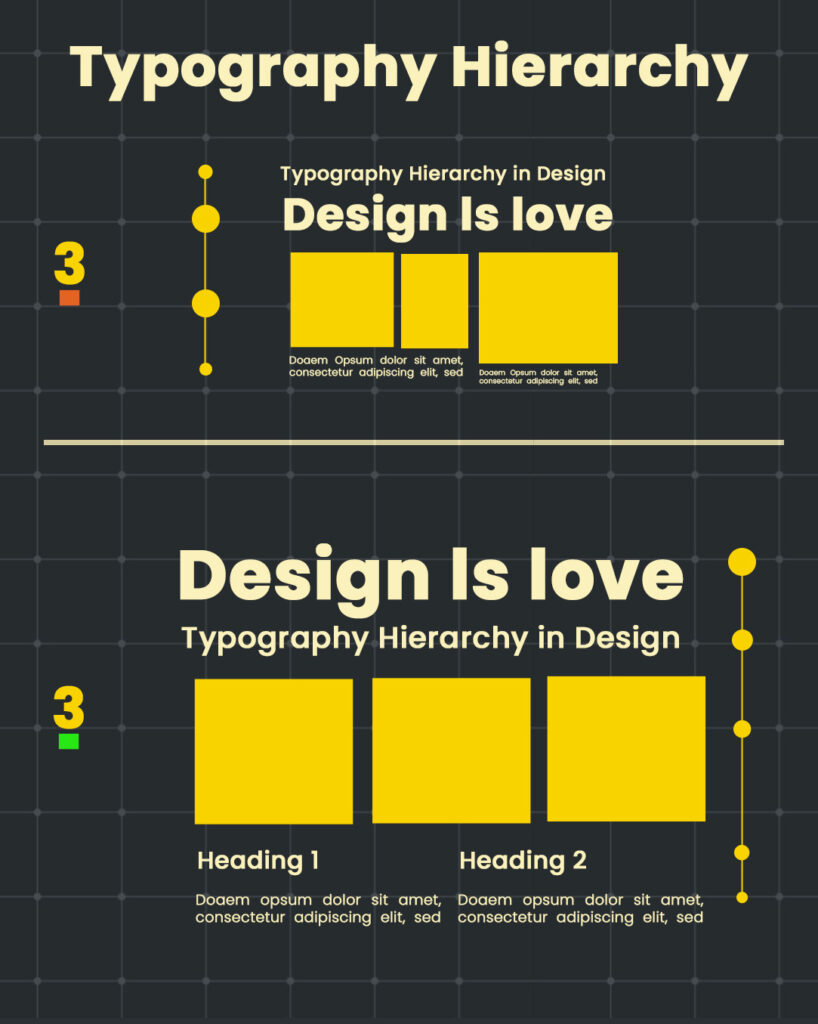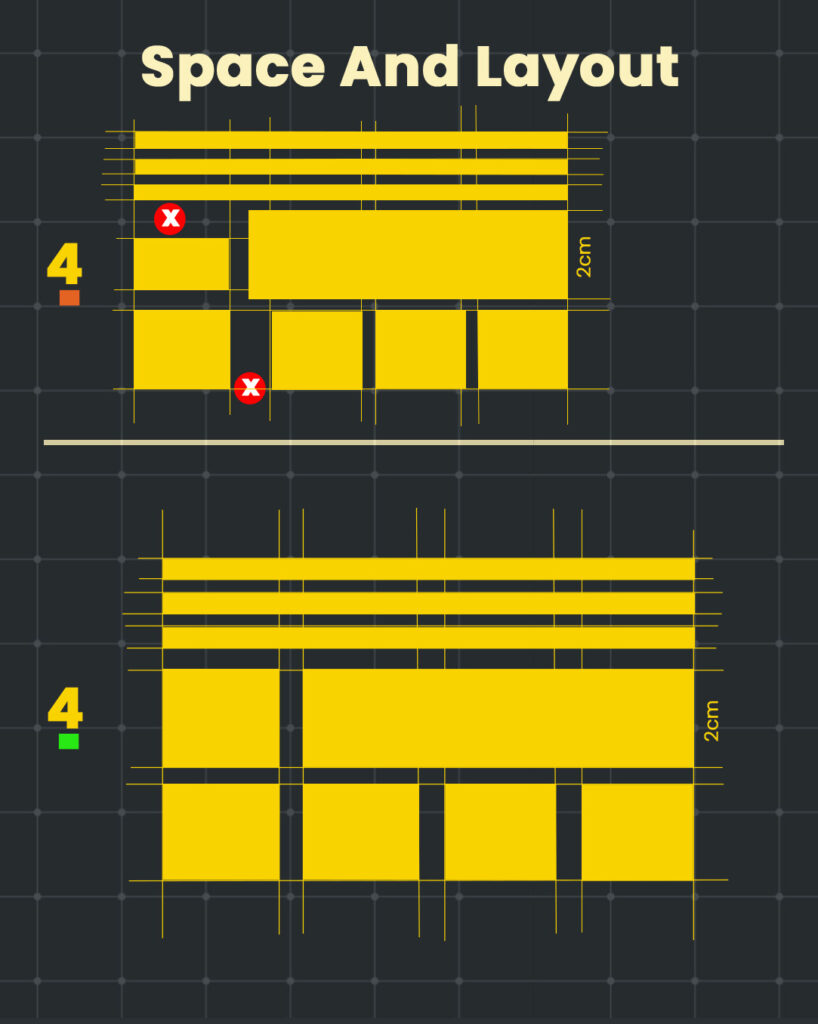
24 Jun 2025
Visual Hierarchy in Marketing: Guide Users and Boost Engagement
Visual hierarchy in marketing refers to arranging elements in order of importance. Designers use visual characteristics to make information easily understandable for users. By placing elements logically and strategically, they guide users toward desired actions.
It’s the visual hierarchy that shapes the user experience. If users can’t quickly determine where to look, there’s a high chance the page layout lacks a strong visual hierarchy.
Why Visual Hierarchy Matters in Marketing
Most of the time, the distinction between a Web site that looks professional and one that doesn’t has nothing to do with fancy graphics or expensive photography. At the end of the day, it’s all about creating a good visual hierarchy in marketing.
So, whether you are designing a logo, marketing collateral, or social media design for your brand, you can enhance the quality of your branding by using visual hierarchy effectively. A visual hierarchy in graphic design arranges content so that it directs the eye where to go first and in what order. It’s something that can make your website or design memorable or instantly forgettable.
Your potential customers are bombarded with visual content they can’t possibly process at all times. They’re swiping faster than ever, and they make a split-second decision if your brand is worth their attention, let alone money.
For deeper insights into how the consumer mindset works, check out our blog on Consumer Psychology in Marketing.
Core Elements of Visual Hierarchy in Marketing
Size and Scale : Using Visual Weight in Graphic Design

It’s human nature that we pay more attention to bigger things. We instinctively associate a larger size with greater importance and often overlook more minor details. Brands can actually use the notion of visual weight in their marketing to shape their content in a way that helps with their communication objectives. This is where marketing design principles like scale and proportion come into play.
Color and Contrast: Key Visual Hierarchy Principles

Color is not just for aesthetics; it can establish your brand’s tone, mood or meaning if applied in a strategic manner. It’s colors and contrast that our brain really focuses on when it sees a design. In fact, entire strategies are built on color psychology in marketing, showing how different shades can evoke a plethora of emotions in consumers.
These elements capture attention and guide your audience exactly where you want them to look. For example, a bright orange CTA would stand out against a dark landing page background.
Typography hierarchy: Prioritizing Information in Marketing Design Principles

Think of typography like tone in a conversation. It tells people what to pay attention to first. Big, bold headlines are like someone speaking up in a room, while smaller text feels more like a quiet aside. When you adjust the size, weight, or style of your fonts with purpose, it helps your message flow naturally. It’s not about making things look fancy. It’s about helping your reader move through your content with ease.
Space and Layout: Creating Clarity with Visual Hierarchy in Graphic Design

Have you ever entered a messy room and immediately felt overwhelmed? That’s the sensation we feel when designers overcrowd a design. White space is not empty or wasted; it is what gives your content breathing room. And it’s neat and helps keep your content organized, so your reader knows where to look next. Effective use of space enhances visual hierarchy in marketing materials.
It’s like setting the mood before a good conversation. You’re not just putting things down. You’re making comfort and clarity.
Bonus: Gestalt Principles That Enhance Visual Hierarchy in Marketing
Understanding Gestalt principles gives designers a potent edge. These psychology-backed concepts explain how humans naturally interpret visual information, subtly elevating design by aligning with perception.
1. Proximity
Grouping Related Elements For Visual Hierarchy in Graphic Design. Elements placed near each other are perceived as a group. This principle organizes content without the need for extra lines or borders. When related items are placed in proximity, that relationship becomes obvious immediately.
2. Similarity
Objects are considered to be of the same category if they have a similar shape, size, or color. When fonts, buttons, and icons are consistent, it is easier for users to find their way around without getting lost
3. Figure and Ground
Viewers automatically distinguish between subject (the figure) and background (the ground). Key content is also well-helighted with strong contrast and clear focal points leading the eye with purpose.
4. Closure
The mind completes what isn’t fully shown. Designs that include partial shapes or silhouettes can feel more dynamic yet remain recognizable.
5. Continuity
The eye prefers smooth and uniform paths. Basic visual cues, such as arrows or leading lines, can guide a user’s attention from one portion of the page to another. As you contemplate how size, contrast, typography, whitespace — and, even, Gestalt principles — work together to draw attention, remember: design isn’t just about looking good. It’s about communicating meaning.
If you’re seeking a partner who truly lives and breathes visual hierarchy and smart design, you’re in the right place. At Biztal Box, our creative agency in New Delhi crafts interfaces that feel intuitive, purposeful, and memorable—because every pixel has intent.
FAQs on Visual Hierarchy
1. What is visual hierarchy in marketing?
Visual hierarchy in marketing is the method of arranging design elements—like text, images, and colors—so that the most important information grabs attention first and guides the customer toward taking action.
2. Why is visual hierarchy important in graphic design?
Visual hierarchy in graphic design ensures that content is structured logically. It improves readability, makes designs more user-friendly, and helps brands communicate messages more effectively.
3. What are the key visual hierarchy principles?
The main visual hierarchy principles include size, color, contrast, alignment, proximity, whitespace, and typography. These principles guide users’ eyes through content in a planned order.
4. How can businesses use visual hierarchy in marketing?
Businesses can use visual hierarchy in marketing by highlighting call-to-action buttons, organizing content with proper headings, and using contrasting colors to draw attention to key messages in ads, websites, and social media posts.
5. How does size and scale support visual hierarchy in marketing?
Size and scale naturally draw attention to bigger elements first. Brands use this principle of marketing design to highlight key messages and guide customers toward important content.
6. Why are color and contrast important in visual hierarchy graphic design?
Color and contrast grab immediate attention, set the mood, and guide users’ eyes to specific elements like call-to-action buttons or headlines in visual hierarchy graphic design.
7. What is typography hierarchy in visual hierarchy principles?
Typography hierarchy shows readers what to focus on first. Larger, bold fonts act like a strong voice, while smaller text guides them through supporting details smoothly, making it a core part of visual hierarchy principles.
8. How does space and layout enhance visual hierarchy in marketing design principles?
Space and layout prevent clutter and create balance. White space provides breathing room, making designs clear, organized, and aligned with effective marketing design principles.
9. What additional design principles can enhance visual hierarchy in graphic design?
Understanding Gestalt principles along with visual hierarchy principles gives designers a potent edge. These psychology-backed concepts explain how humans naturally interpret visual information, subtly elevating design by aligning with perception.
Also Read:- Volkswagen: Think Small — The Poster That Blew Up Advertising
Leave a Reply
Your email address will not be published. Required fields are marked *












Comments